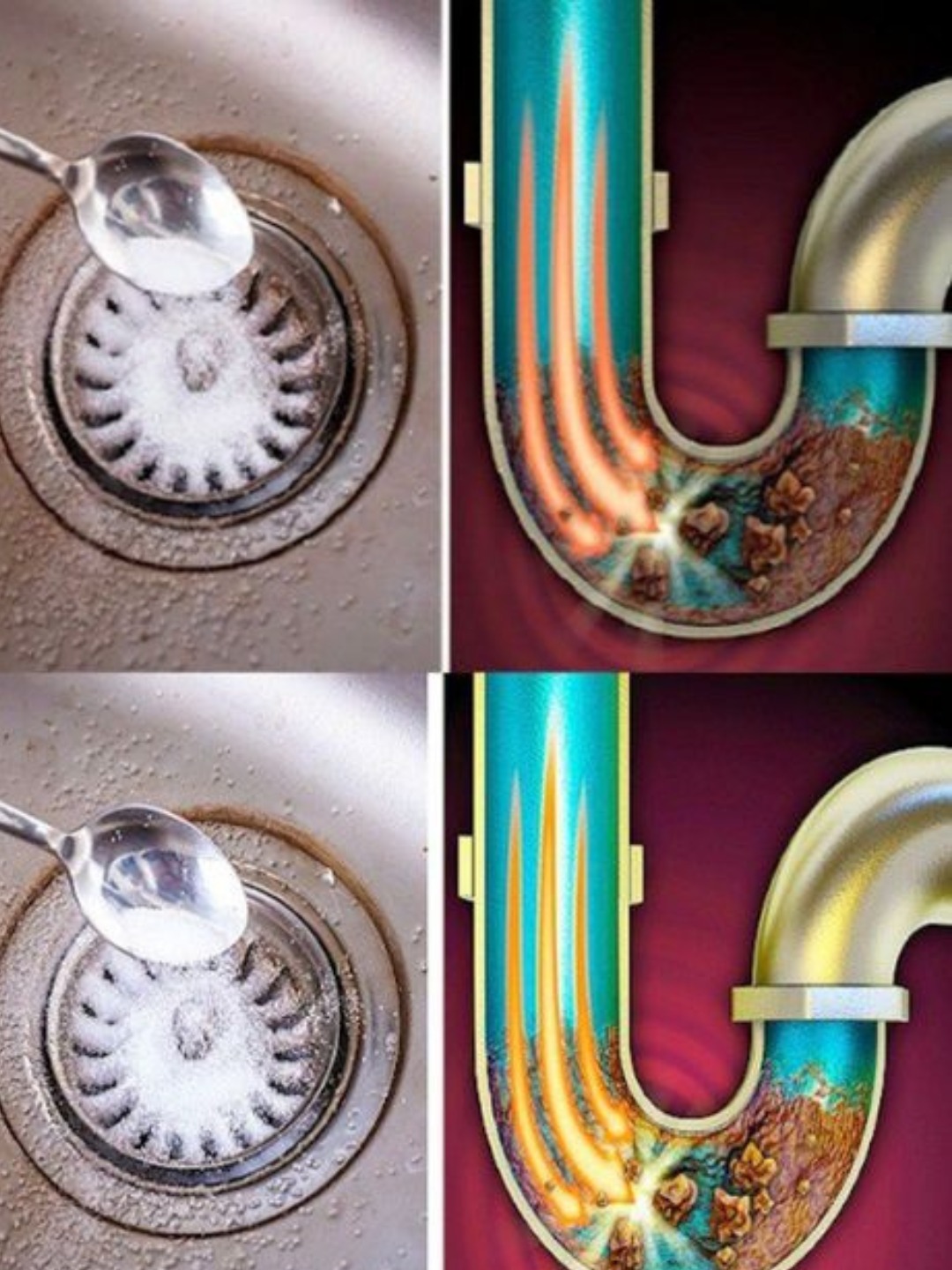
4 Effective Ways to Unclog a Drain Without Harsh Chemicals – Safe, Natural & Surprisingly Powerful
🛠️ Why Natural Drain Cleaning Works
Your typical kitchen or bathroom clog is made of:
Grease, oil, and food scraps (kitchen)
Hair, soap scum, and toothpaste gunk (bathroom)
These organic materials respond well to heat, pressure, and natural reactions — not caustic lye.
And by avoiding chemicals, you protect:
✅ Your pipes
✅ Your family
✅ The planet
Let’s get that water flowing again — the green way.
✅ 4 Natural Ways to Unclog Any Drain
1. Boiling Water + Baking Soda + Vinegar (The Classic Power Trio)
Best for: Mild to moderate kitchen sink clogs
🔁 How It Works:
Baking soda scrubs, vinegar creates fizzing action, boiling water flushes debris.
🔧 Steps:
Pour ½ cup baking soda down the drain.
Follow with 1 cup white vinegar — cover the drain if possible to trap the reaction.
Let bubble for 10–15 minutes.
Flush with boiling water (2–4 cups).
💡 Pro Tip: Do this weekly as maintenance to prevent buildup.
2. Plunger (Yes, It Works on Sinks & Showers!)
Best for: Stubborn clogs in sinks, tubs, or showers
🔁 How It Works:
Creates suction and pressure to dislodge blockages — just like in toilets.
🔧 Steps:
Remove standing water if excessive.
Plug overflow holes (on sinks/tubs) with a wet rag.
Add enough water to cover the plunger cup.
Pump firmly up and down 15–20 times.
Test flow. Repeat if needed.
💡 Key: Get a tight seal. Use a flat-bottomed sink plunger (not a toilet one).
3. Zip-It Tool or DIY Wire Hook (For Hair Clogs)
Best for: Bathtub & shower drains full of hair
🔁 How It Works:
Fishing out the root cause — literally.
🔧 Steps:
Buy a Zip-It tool ($2 at hardware stores) or make one from a straightened coat hanger with small hooks bent at the end.
Insert into the drain and push down.
Rotate and pull up — it grabs hair and gunk.
Rinse and repeat until clean.
💡 Bonus: Clean every few weeks to prevent future clogs.
4. Wet/Dry Vacuum (Serious Suction Power)
Best for: Deep, stubborn clogs that won’t budge
🔁 How It Works:
Uses strong suction to pull out debris — like a super-powered plunger.
🔧 Steps:
Set vacuum to liquid mode.
Create an airtight seal over the drain with the hose (use a rag around edges).
Turn on for 15–30 seconds.
Check flow. Repeat if needed.
🔧 Works on floor drains, laundry tubs, and more.
🌱 Bonus: Prevent Clogs Before They Start
✅ Use drain strainers in sinks, tubs, and showers
✅ Avoid pouring grease down the kitchen sink — wipe pans with paper towels instead
✅ Flush drains weekly with hot water + baking soda/vinegar
✅ Clean pop-up stoppers monthly — they trap gunk fast
✅ Run cold water while using garbage disposal
Prevention = fewer emergencies.
❌ What NOT to Do
🚫 Never mix vinegar + bleach → Toxic chlorine gas
🚫 Don’t use chemical cleaners after natural methods → Dangerous reactions
🚫 Avoid drain snakes on PVC pipes unless gentle — can scratch or puncture
Stick to safe, simple solutions.
❤️ Final Thought: Nature Can Handle the Grime — You Just Need the Right Tools
You don’t need dangerous chemicals to fix a clogged drain.
Just a little know-how, some elbow grease, and everyday items already in your home.
By choosing natural methods, you’re not just clearing a pipe — you’re protecting your health, your home, and the environment.
So next time the sink gurgles…
Reach for the baking soda, not the bleach.
Because sometimes, the best solutions are the simplest — and safest — ones. 💛